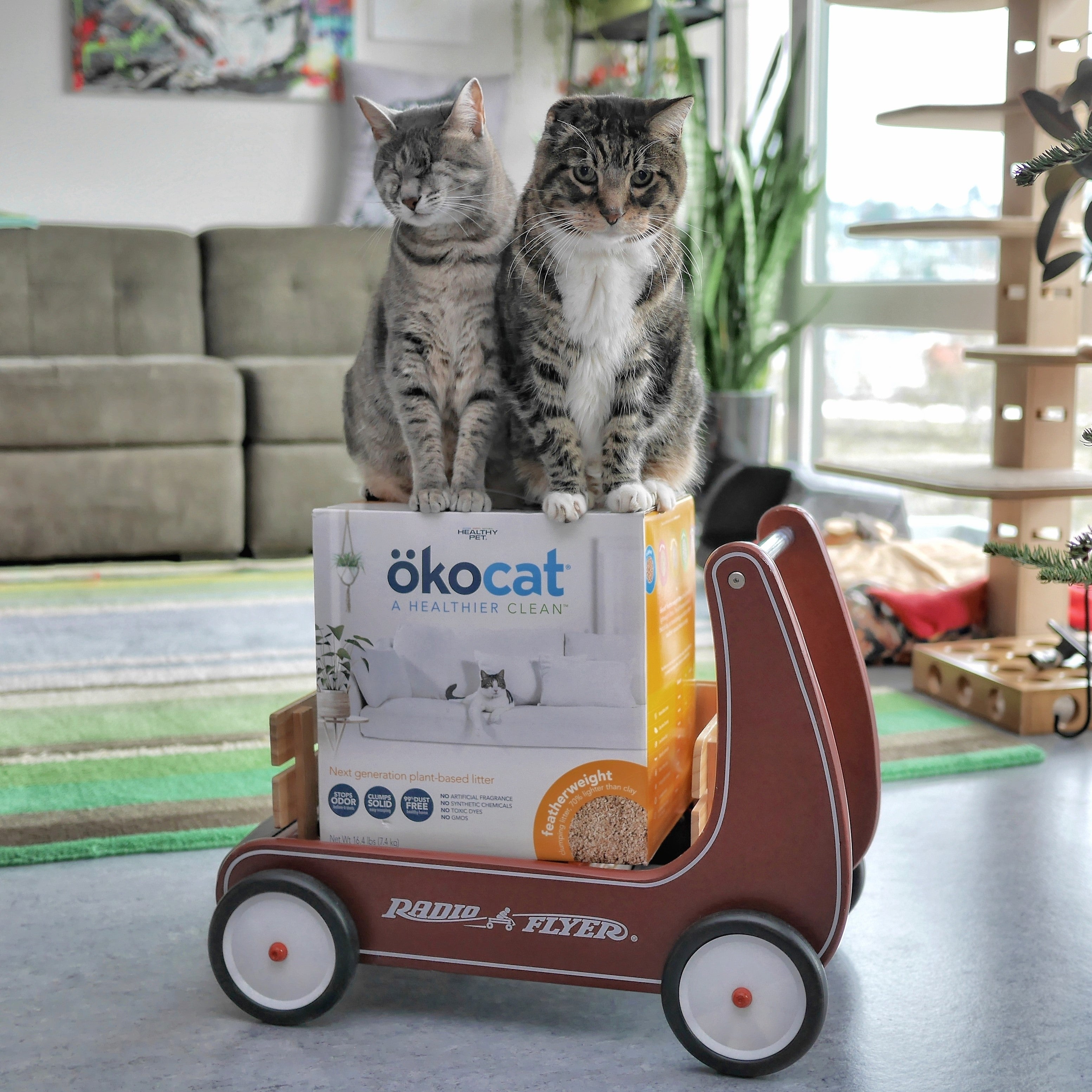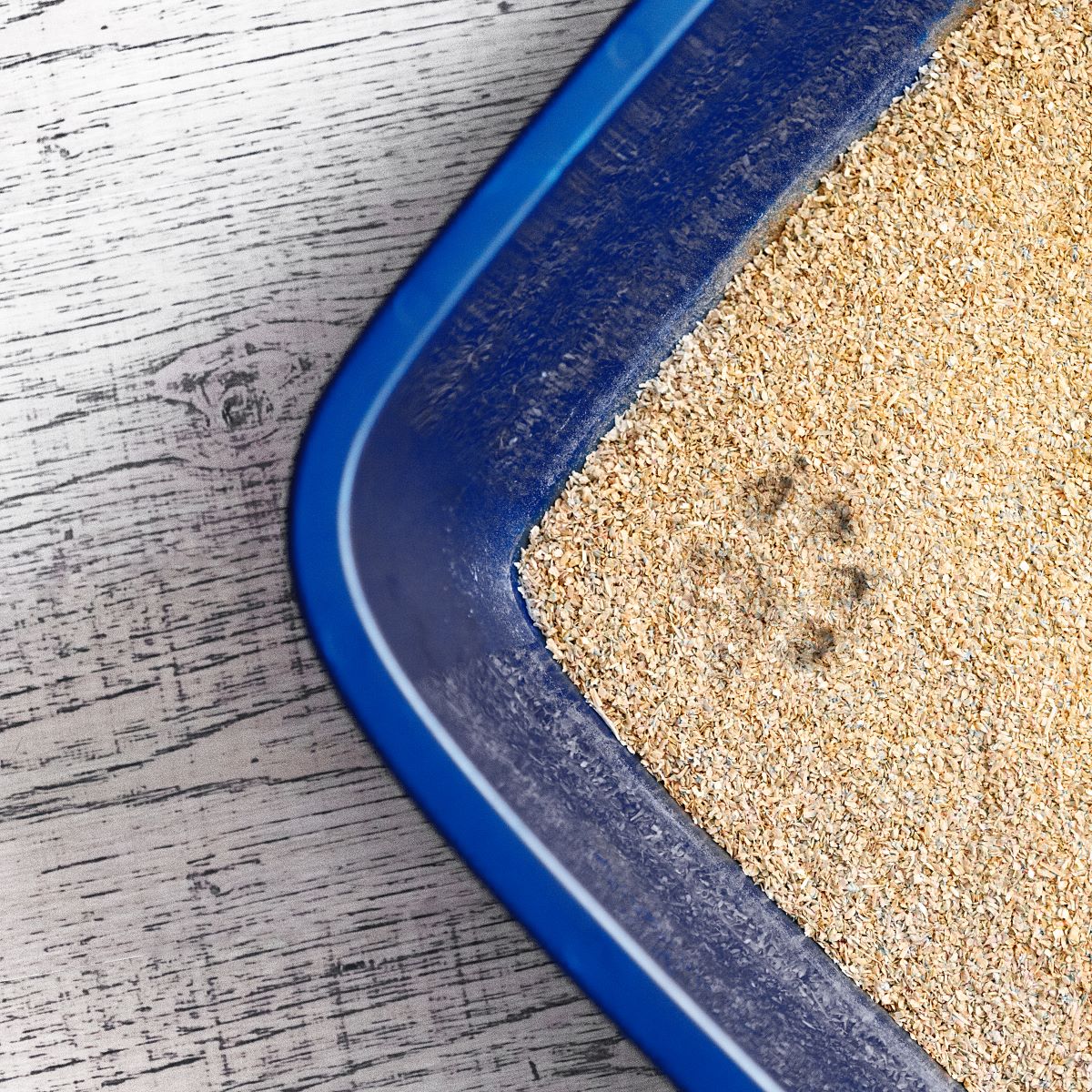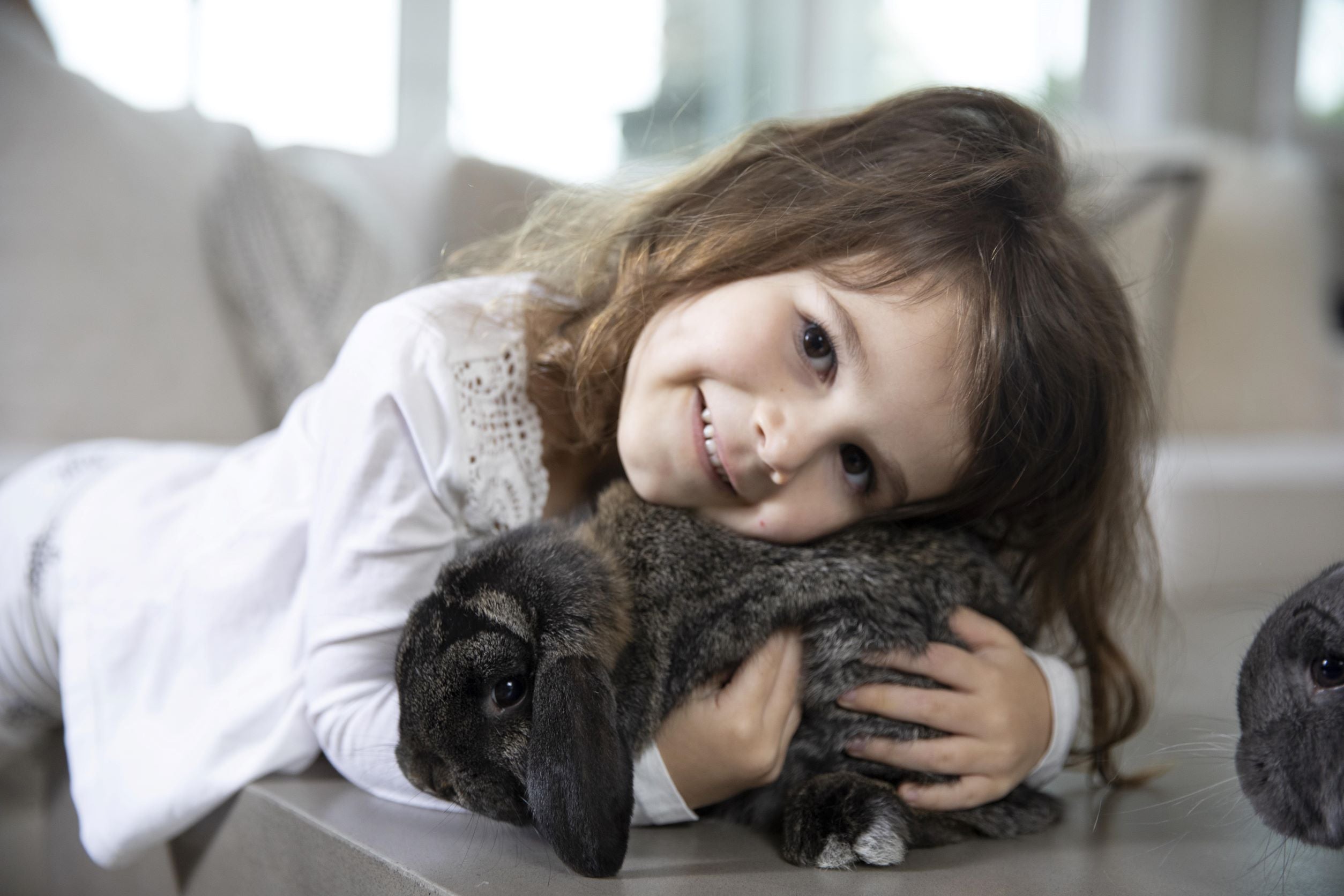
Living green with cats - it's easier than you think!
Did you know that there are over 600 million pet cats across the world with nearly 80 million in the United States alone? I happen to be the owner of two; a 20-year-old male tabby named Klaus and a blind, adventurous girl named Juno who’s 18 years his junior. I use the term owner quite loosely, of course, as my duties are really those of a cat butler. I obtain the food, rigorously stick to the feeding and snack schedule that the cats set for me, and take care of their grooming and health needs.
I also have the pleasure of litter box duty, which means that I’m scooping a dozen times a day and refilling the box to the preferred level with fresh litter. Throw in occasional cleanup from dug-up plants and it can feel like a lot of work, but it’s well worth it … at least that’s what Klaus and Juno tell me!
Going green with their food
One thing I learned from years of cat ownership is that a 12-pound ball of fuzz can consume a lot of products, and likewise create a surprisingly sizable mountain of waste. Once I started to imagine what millions of cats collectively do to landfills, I knew it was time to make the green choice to minimize the footprint (and paw print) on the planet. With food, it’s a matter of buying products that are made locally and packaged responsibly in containers that can be rinsed and recycled. I avoid buying products made from beef, lamb, or fish, since these not only misalign with a cat’s natural diet, but the process of raising large livestock and fishing taxes environmental resources beyond the available alternatives. For my cats, it’s chicken and turkey for breakfast, lunch, and dinner, and so far they are not complaining!
Going green with their litter
As far as litter, the choices get more confusing. Clay seemed like a good option once; it comes from the earth, so how bad can it be, right?! However, once I learned that clay is obtained through dirty strip-mining operations, and does not biodegrade in landfills, it was time to seek out smarter choices. The key was to find something that was not only sourced responsibly, but also able to break down completely once discarded. I skipped right over the synthetic crystals and “miracle litters” because you cannot beat what Mother Nature already invented: wood!

Wood comes in the form of shavings, pellets, granules, and even paper. I personally choose the granules and pellets due to low dust and very manageable tracking (it’s the trail of litter that you follow to confirm that kitty went on the kitchen counter immediately after using the box). Many wood litters, unfortunately, do not clump, which means there’s more frequent changing required and thus more waste produced.

Luckily, I found ökocat, which is the only wood litter sourced by responsible means that clumps as well as clay, if not better! The clumping agent is also naturally derived from plants, which is good news for those cats and humans worried about negative health effects of inhaling litter dust. What happens to our used ökocat, you may ask? Since it fully biodegrades, I could flush it down the toilet, or use it for flowerbed compost, but I opt to collect it in food compost bags (sometimes old paper bags) so it can break down and return back to the earth once reaching the landfill.

I encourage every cat owner to think about the ways that he or she can lessen the burden of pet ownership on the Earth. Making smarter, greener choices is a matter of research, and you may be surprised to learn that it doesn’t necessarily cost more in terms of money or effort. Read the labels on the products you buy to determine what’s inside and where it came from. Whatever you choose to buy, imagine a million others buying it too; do you still feel as good about what’s in your cart?
Being a cat owner is a wonderful thing, but being a green cat owner is something everyone can appreciate, including Mother Nature!
Guest post from Mick Szydlowski, owner of Klaus and Juno (@TheKlausCat and @TheJunoCat on Instagram) who lives in Seattle with his wife, Bethany, and two young girls, Faye and Fern. Mick is so crazy about his cats that he writes children’s books about their adventures; one of these books happened to be read from the International Space Station recently and broadcast to classrooms worldwide! Visit oskarandklaus.com









 email us
email us